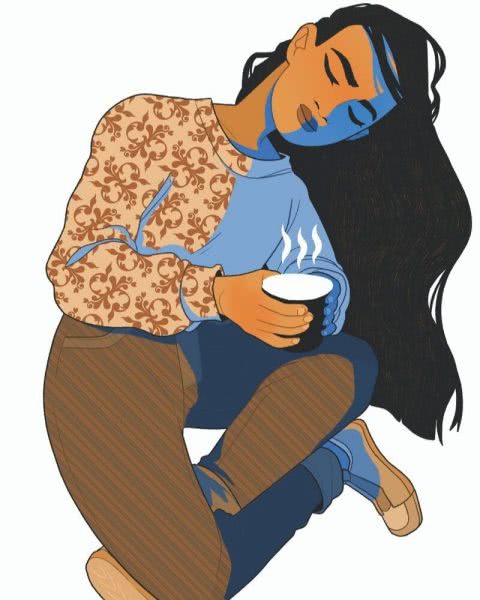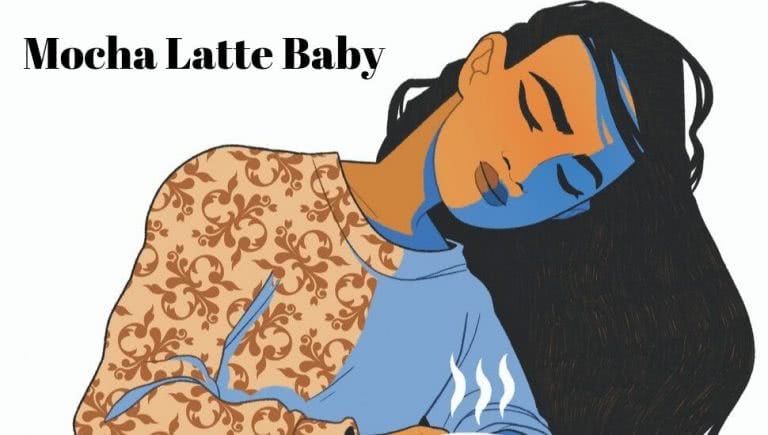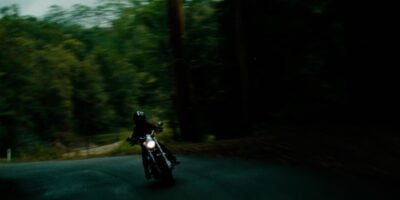Biracial Aphrodite Aristine Dobson discusses the dualities and dilemmas of growing up mixed race in the city of Sydney.
“Halfie” is an affectionate term I’ve used, that some individuals of mixed race use to describe each other, often in casual conversation. It comes with its own unique set of experiences and tribulations, one of those being that we find ourselves caught between the two cultures we grew up with, and feel as though we are unable to fit in with those who are technically meant to be our tribe.
When curious white people ask me where I’m originally from I happily tell them that I am half-Indonesian, half-Australian. I came to Brisbane, Australia when I was five, learnt English, watched rugby, took a liking to sausage rolls and developed a thick Aussie accent. Unfortunately, these were characteristics that made it difficult for me assimilating back into Indonesian culture in my formative years.
I was twelve when we moved to Jakarta again. I reacquainted myself with the Indonesian language, ate at street vendors and became immune to spicy food, yet I was still considered a “bule” (a foreigner, usually of European descent) by those who passed me by on Jakarta streets. This was strange for me, because in Australia I was always considered either Indonesian or Asian. At times I’ve felt as though I was never white enough for the white people, and never Asian enough for Asians.
I am an Australian. It’s undeniable. I’ve settled in Sydney and have a very diverse mix of friends, as most people do living here. Sydney, however, is the type of city that can be very divisive in terms of where you’re from and who your people are.
I’ve lived everywhere, but really, I belong nowhere. I’m a little bit of everything, and everyone gets a little bit confused by it all. I’ve always felt like my life has been scattered, not in order, a little all over the place, and this made going to university rather tricky. I didn’t grow up in a quiet suburban area in Australia and attend school with a trusty group of friends that I’ll have for life. For the most part, I was alone, and it was in the middle of university that my mixed race dilemma really became obvious to me.
My Dilemma
In the midst of an identity crisis, I conversed with a fellow Eurasian about whether I looked more Euro or Asian. “Halfies look more like their Dad,” he said. His justification being that I (who has a white Australian dad) looked more European, and he (who had a Chinese Dad) looked more Asian. Although I find this logic incredibly questionable, whether or not it is true shouldn’t matter, so why did it cross our minds?
Eurocentric, a big word I learned in a race and gender studies elective at university, refers to the focus and dominance of European culture in comparison to the rest of the world.
I spoke with Jamila Gilbert, another biracial goddess, about her own experiences with Eurocentrism.
“Often when I tell people I’m Sri Lankan they will make comments like ‘oh really, I thought you were Spanish or Italian.’ it’s weird because I think they think it’s a compliment for me to look more European than Sri Lankan.”
Jamila believes the reason for this is because there is a sense of privilege that is associated with having lighter skin.
“In society, being European and inherently white is revered more so than being of Asian or African descent, because it has a negative connotation,” she says.
As a nation we hold ourselves in high regard for being a multicultural melting pot. We believe that we are a post-colonial, post-racial nation yet we have not let go of our colonial mindset. Systemic racism is still subtly embedded in Australia’s political and social environment, especially in the era of Trump. White dominance is evident in our society, always creating tensions between the European and non-European, which made it difficult for me to understand my position as a person who identifies as both. University debates about multiculturalism and race were always hard for me to comprehend, especially when I struggled sometimes with my own racial identity. I did not know where to situate myself in these conversations. Is it justified for me to talk about the Asian experience if I’m only half? Does it make me a phony to my own culture?
Biracial persons are seen as walking representations of multiculturalism and equality, and to a certain extent I most definitely am, but it does not mean I am exempt from experiencing discrimination or othering. Just because I don’t quite identify as one or the other, does not mean I am blind to racial injustice. The intersections of my cultural identity only make my experience of racial prejudice more nuanced. If anything, my being mixed has only enhanced my worldview.
I don’t experience blatant racism in my day-to-day, for me it is more indirect due to my ethnic ambiguity. Much like Jamila, I have people trying to guess where I’m from and get it horribly wrong. On the other end of the spectrum, because I’m half white I’m often seen in Indonesia or by my non-white counterparts as having white privilege, which is either met with appraisal or exclusion, both equally uncomfortable.
“What are you? You’re so beautiful! I hope you don’t mind me asking. I have a friend who looks just like you she’s half Asian too, half Filipino, let me show you.” – White girl I met at a music festival.
Her phone wasn’t getting any signal so I never did see a photo, but I’m guessing the resemblance was little to none. I never saw her again, but I knew there was no harm intended, just fascination. If anything my experience was proof that people are still weirdly responsive to any form of difference.
I think our first mistake is thinking the concept of equality, is assuming we are all the same, that as humans we are bonded together from the same experiences. We fail to recognize the complexities of identity, specifically race and culture. None of us should be judged based on just one aspect of our being. I, as a person of mixed race, should not be forced to pick or choose, and I refuse to be pinned down as one thing. So here is my declaration for a celebration of difference and open discourse about bi-cultural families and bi-racial people.

A Javanese Diva
My mother taught me how to be a proper Javanese woman regardless of being half Australian. She had always found a balance between modern, liberal ideologies, often associated with Western culture and traditional Indonesian customs. Together we deconstruct and navigate both, which has made me an avid advocate for intersectionality and intersectional feminism. Both my parents, really, have showed me to embrace both cultures and in turn I have not let it define me but become a fundamental part of who I am.
If you really must know, I look like both my parents; I speak English well enough to have obtained a degree in Creative Writing. I enjoy Johnny Cash and Elvis Presley and know all the lyrics to Lil Kim’s ’96 hit ‘Not Tonight’, which makes a lot of people in the room very uncomfortable when I show them. For me, conversing in Indonesian is just as easy as smashing a tinny with the boys on a Saturday arvo. I’ve accepted that I’m both Aussie and Indo, so why can’t you?
To all the mixed kids out there, I’ll let you in on a little secret. We are the future. In this ever changing globalized world, multiculturalism is a given. We are weapons now that diversity is more valuable. Our experiences are valid; so don’t panic when someone asks you where you’re from. Embrace your ambiguity, and thank your parents for getting it on all those years ago.
In the mirror I see what I have been given, my rosy cheeks and button nose. I smile, with full lips, and see the world through almond shaped eyes. I stand there as a symbol of how two people from different cultures collided and I’m grateful that I can speak for both. The people I have eventually surrounded myself with aren’t who I thought would be my clique. My identity is lip-gloss on a sunny day and words with meaning; the Mocha latte skin is just an added bonus.
Artwork by Sophia Melika @sophiamelika


































